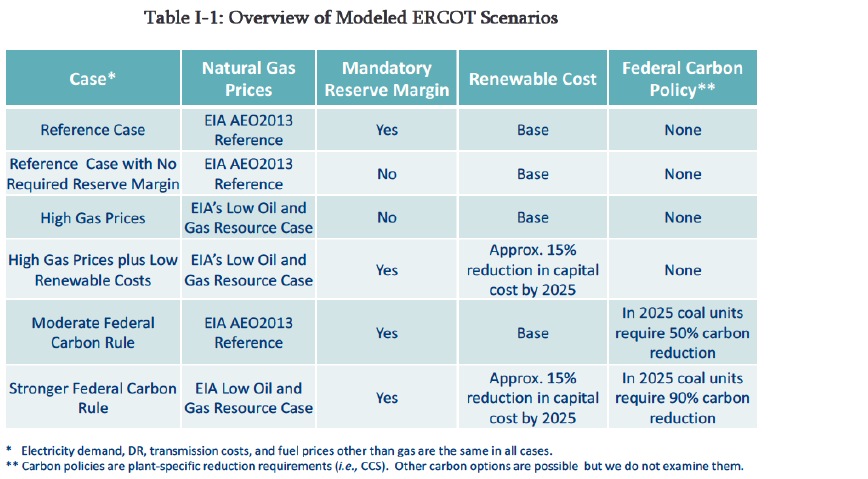THE TEXAS CLEAN ENERGY COALITION
Introduction and Summary
All over the world, electric power systems are experiencing the impacts of cheaper renewable energy, expanded unconventional natural gas and oil, new policies to address global climate change risk, and dramatic technical progress on the many facets of electricity control, efficiency, and pricing. These and other factors are prompting large changes in the expansion and management of the electric power grid.
In the electrically-independent power system of Texas known as ERCOT, the evolution of the power sector is especially related to the development path for renewable energy and natural gas-fired power. With over 12,000 MW of installed capacity, Texas is the largest state producer of wind-powered electricity in the U.S. Wind resources in Texas are more than double the next two largest wind capacity states combined. At the same time, Texas is the leading U.S. producer of natural gas, and the state generates nearly half its electricity from natural gas plants, substantially more than it generates from coal or nuclear power. Texas also has abundant, high-quality wind resources and solar energy potential.
In June of this year, we produced a white paper for the Texas Clean Energy Coalition (TCEC) exploring qualitatively the short- and long-run interaction between natural gas and renewables in Texas’ energy future. This preliminary review found that the relationship between natural gas and renewables had aspects that were both complementary and, in some cases, substitutive. We found that over the next two decades the degree to which natural gas or renewables “crowd out” the other source, as opposed to develop together, was a function of future policies and market design features, technological developments, and the price of electric fuels and resources of all types.
In this report, we examine the future of gas and renewable power in Texas analytically through the simulation of several future grid expansion scenarios. Using a state-of-the-art modeling system, we simulate the ERCOT system through 2032 under the six scenarios shown in Table I-1: a reference scenario includes a required reserve margin requirement; a similar case without a reserve margin requirement; a scenario with high natural gas prices; a scenario with high gas prices and lower renewable energy costs; and two scenarios with potential EPA coal power plant rules. Table I-1 summarizes our scenarios and Section Three describes them in more detail.
In each scenario, our modeling system simulates both the market-driven additions and retirements of capacity by power generators and the operation of the system by ERCOT, down to the intra-hour time frame, once these additions are installed. by combining the long-and short-term time frames, our approach ensures that the resource additions selected by the market result in a system that is able to provide grid power at the lowest total cost consistent with reliability standards.
Our modeling approach is guided by the assumption that as the amount of variable (or intermittent) renewable energy added to an electricity system increases, so does the relevance of short-term dynamics such as the ability to quickly start and ramp power resources up and down to closely follow the fluctuating renewable supplies. Traditional approaches to analyzing the optimal addition and retirement of power plants over time tend to represent such dynamics in a very simplified form at best. Our approach allows us to model these shorter term operational constraints made more prominent by the introduction of variable renewable sources in a very detailed fashion.
Our models were run using data on generating units and fuel prices primarily from ERCOT, the U.S. Energy Information Administration, and the Electric Power Research Institute. We supplemented these data with our own analysis and calculations regarding renewable energy costs and installation rates, environmental retrofits, and other specialized assumptions. Our sources are discussed in more detail in Sections II and III.
Download full version (PDF): Exploring Natural Gas and Renewables in ERCOT Part II
About the Texas Clean Energy Coalition
www.texascleanenergy.org
“The TCEC supports a clean energy economy in Texas based on affordable and reliable clean technologies including energy efficiency, renewable energy and the broader use of natural gas as a way to help Texas achieve its full economic potential in a manner that is available to all Texans.”
Tags: ERCOT, Natural Gas, Solar, TCEC, Texas, Texas Clean Energy Coalition, TX, Wind















 RSS Feed
RSS Feed